“Other countries, they are afraid of death, but we love it!” said Eduardo, taking another swig of beer. It was around 8 pm and already the plaza was buzzing with kids playing, vendors pushing wheelbarrows overflowing with candy and a third rate mariachi band pumping out mood music. For the past two days people had been thinking about death, and now they were ready to party.
La Dia de Muertos is an interesting hybrid kind of holiday where ancient rituals fuse with more recent Catholic beliefs. Some of the traditions can be traced back to an Aztec festival honoring Mictecacihuatl, Queen of the Dead. Some go back even farther. Like so many great holidays, these local traditions fused with the Christian observance of Hallowmas to create a unique new holiday.
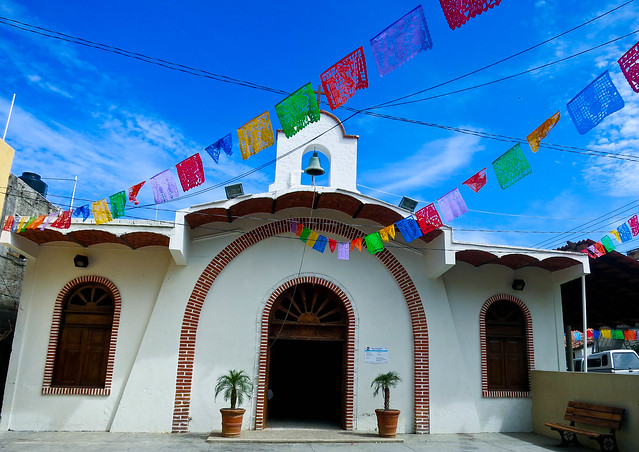
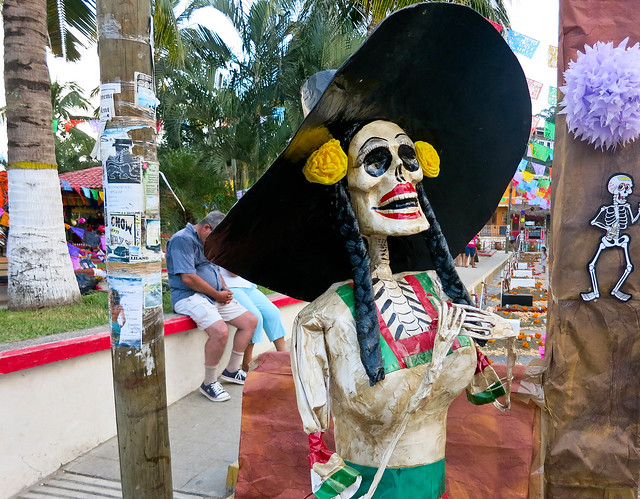
Definitely one of Mexico’s greatest holidays too with colorful decorations, playful skeletons and plenty of dancing, drinking and partying. La Catrina, a well dressed lady skeleton (kind of a modernized version of Mictecacihuatl?), is a major element. She is everywhere; decorating the plaza, for sale on a million souvenirs and the face of many little girls and teenagers in costume.
The celebrations stretch over three days, starting with Halloween and ending on November 2nd. During this time Mexicans believe that the veil between the living and the dead thins. The deceased can come back and visit with their family members. Families spend time cleaning up their loved ones grave sites, decorating them with marigolds. Often they will picnic or drink on the graves, reminiscing about their loved ones.

The night before, November 1st, was dedicated to a kind of all town talent show, mostly featuring kids doing traditional dances and acting out skits. The highlight was a group of teenagers performing a choreographed number to Michael Jackson’s Thriller. Dressed as skeletons, naturally.
On the second night we found ourselves sitting in the plaza, drinking Tecate Light with our neighbor Eduardo, who grew up nearby and now runs a real estate office. Everyone is friends tonight.
This was a good year, Eduardo deadpanned, lots of people died. All around the plaza were elaborate altars (called ofrendas) dedicated to those who had recently passed. They were really marvelous celebrations, scattered with treasured possessions of the departed: a saddle, a cooking apron, a favorite baseball cap. Crosses, rosaries and pictures of the Virgin Mary are displayed next to older symbols like vibrant orange marigolds and sugar skulls.
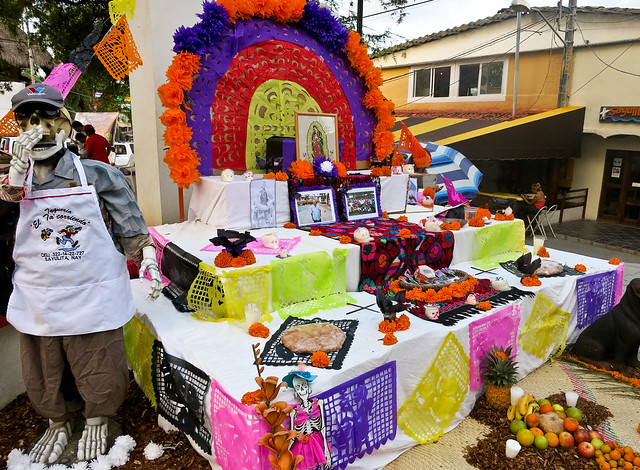

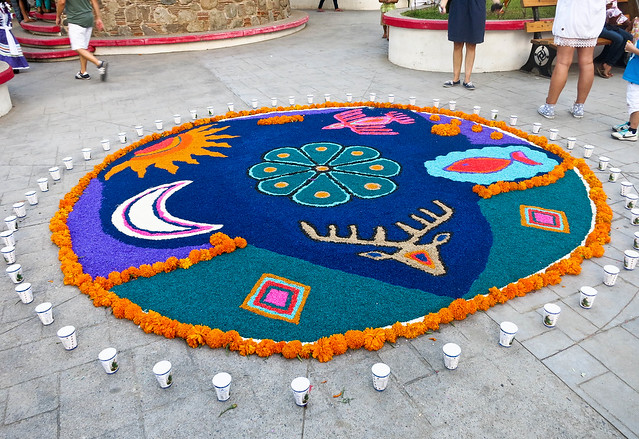
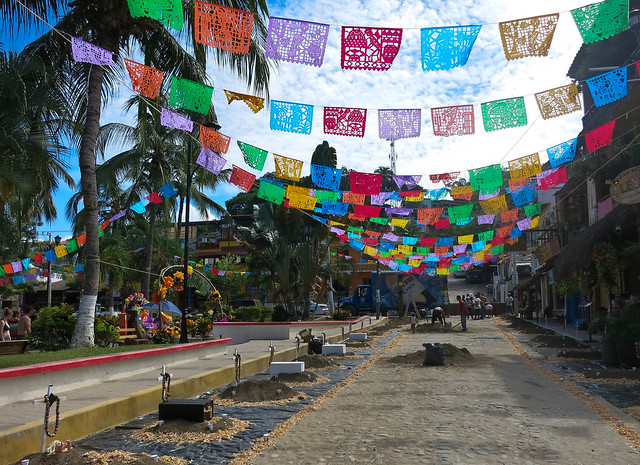
The entire square was bursting with color from a plethora of bright flags, candles and even an elaborate colored rice painting. One of the adjoining streets has been dumped with dirt an transformed into a make-shift mock cemetery complete with tombstones.
This is all done with good humor. Mexicans believe that no dead soul likes to be thought of sadly, that death is a joyous even. Some of the mock graves were topped with (zombie?) baby dolls clawing their way out of the earth. More than one display featured cigarettes or empty liquor bottles.
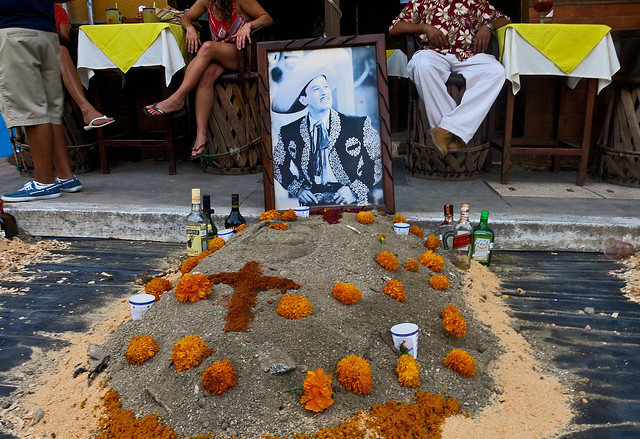
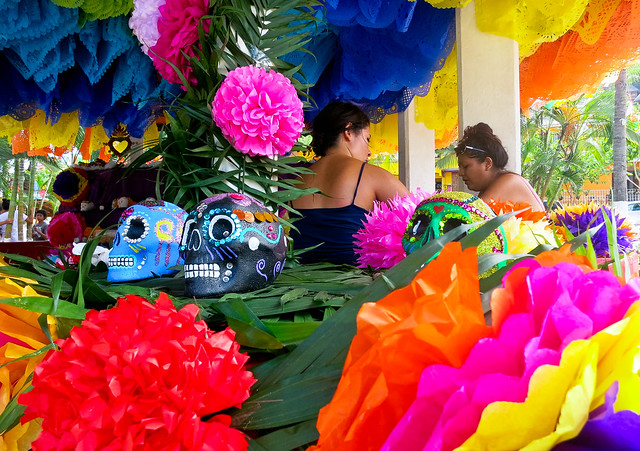
That night we danced, with trumpets blaring and bongos blasting. It rained but nobody seemed to mind much. Two 7 foot tall bobble-headed Catrinas joined in, bouncing to the music. Kids shrieked and danced far past their normal bedtimes, high on sugar and excitement.
What must it be like, to grow up with this? To spend your childhood painted like a skeleton, hanging out in cemeteries and partying with the dead? It probably gives people a much healthier attitude towards death. After all, death one of the inevitabilities of life, what’s the sense in being scared? Why weep when you can celebrate?
“We have a saying in Mexico,” says Eduardo “nobody makes it out of life alive.”

